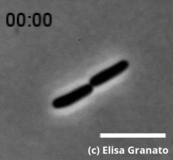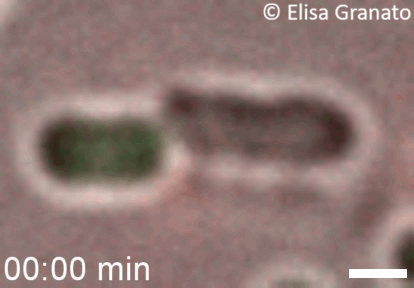
When bacteria fight against other bacteria, they have a whole arsenal of weapons at their disposal, ranging from small diffusible toxins to poisonous spears. And while some species only attack when they sense danger, others are hyperaggressive and do not shy away from preemptive strikes in the absence of a competitor. Some strains even engage in suicidal attacks, which leaves the attacker cells dead and evolutionary biologists puzzled. I am currently investigating how and when bacteria employ their weapon systems, and how these fascinating behaviors might have evolved.
If you would like to know more about bacterial “warfare”, check out our review.

To observe and analyze bacterial competitions, I use genetic engineering and fluorescence microscopy techniques, ranging from single-cell tracking to whole-colony time lapse imaging.
In the past, I have also investigated the evolution of virulence in bacterial pathogens, the evolution of microbial cooperation, as well as the importance of bacterial virulence factors across host organisms. Other topics I am interested in include data visualization, statistical analysis and science outreach.
Current keywords:
bacteriocins, T6SS, interference competition, microscopy
Past keywords:
siderophores, cooperation, virulence, experimental evolution, C. elegans
Species I work with:
Escherichia coli, Pseudomonas aeruginosa, Acinetobacter baylyi